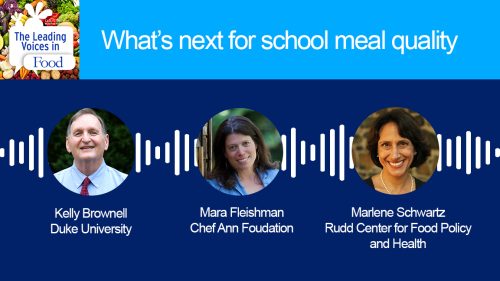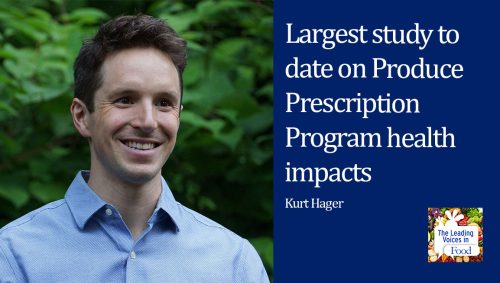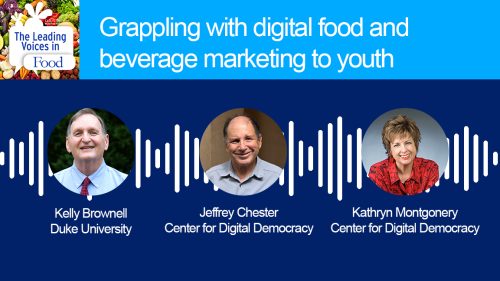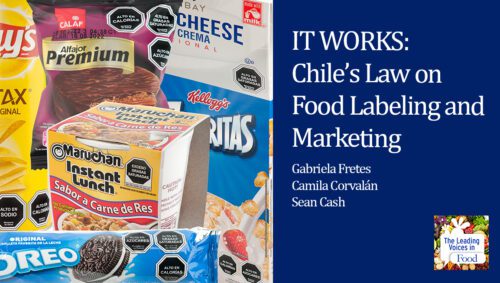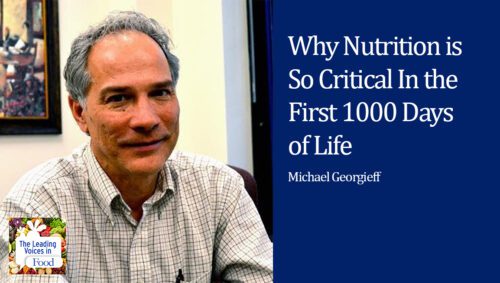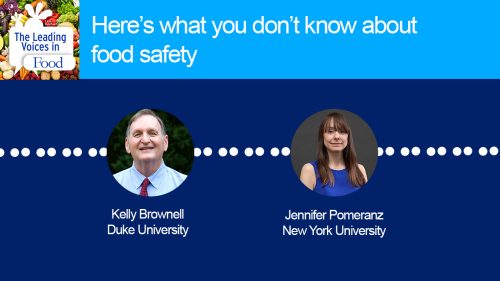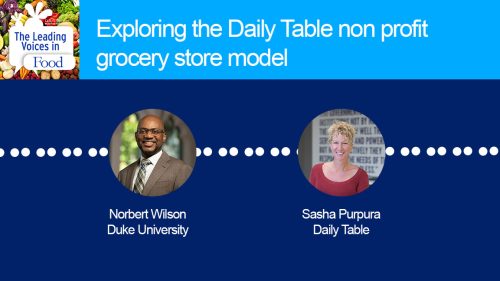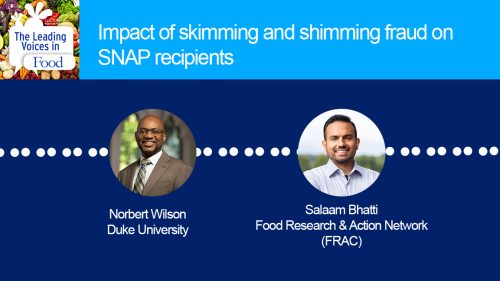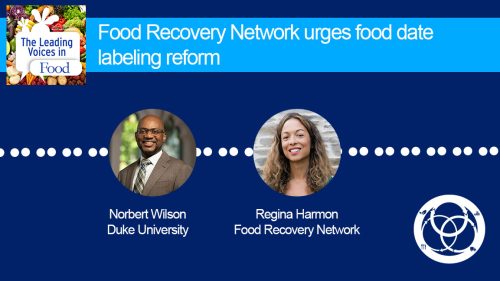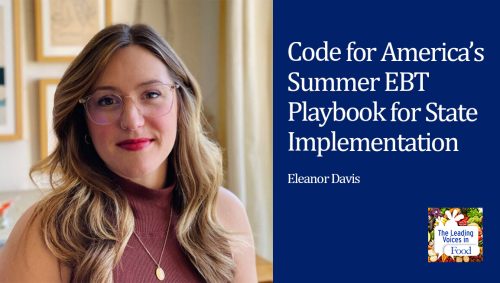E113: The Power of Policy and Parents in School Meals
It wasn’t that long ago that there was a nutrition free-for-all in schools where sugary beverages, high calorie snack foods, and even things like pizzas and cheeseburgers direct from fast food chains were part of the food landscape in schools. What do you think the situation is today? Has it deteriorated even further? Has it improved or stayed about the same? Today’s guest, Dr. Marlene Schwartz, is a champion for improved nutrition and physical activity in schools and one of the leading experts in the field. Schwartz is director of the Rudd Center for Food Policy and Obesity and Professor of Human Development and Family Studies at the University of Connecticut. She’s an expert on nutrition and physical activity policies in schools and preschools nationwide, and has collaborated in particular with the Connecticut Department of Education on their policies.
Subscribe: Apple Podcasts | TuneIN | YouTube Music | SoundCloud | PocketCasts | Radio Public
Tags: Child Development & Nutrition | Childhood Obesity | Children Food Preferences | Diet & Nutrition | Food Insecurity | Food Policy | School Meals | Social Safety Net & Food |

Dr. Marlene Schwartz is Director for the Rudd Center for Food Policy & Obesity and Professor of Human Development and Family Sciences. Dr. Schwartz’s research and community service address how home environments, school landscapes, neighborhoods, and the media shape the eating attitudes and behaviors of children. Schwartz earned her PhD in Psychology from Yale University in 1996. Prior to joining the Rudd Center, she served as Co-Director of the Yale Center for Eating and Weight Disorders from 1996 to 2006. She has collaborated with the Connecticut State Department of Education to evaluate nutrition and physical activity policies in schools and preschools throughout the state. She co-chaired the Connecticut Obesity Task Force and has provided expert testimony on obesity-related state policies. She also serves on the Board of Directors of the Connecticut Food Bank.
Interview Summary
Let me ask you about the food landscape in schools. When people generally think of this, they think of school breakfast, school lunch, but there’s actually a lot more of the picture of food in schools than just this. And you’ve talked about this a lot. Can you help explain?
Sure. So the school meals are definitely the most visible aspect of school food and when I first got into this work, I thought that was pretty much all there was. But once you go into the school, what you realize is that food is available from a lot of different sources. In the cafeteria, there is often food sold outside of the meal program that’s called competitive foods. So those are snacks or other beverages. High schools often have schools stores where they can sell a whole variety of snacks and beverages. Schools also have vending machines that sell food. And then there are fundraisers that are often done during the school day where children can buy food. And then in addition to all the food that’s sold, there’s food that’s simply given out in schools quite commonly, particularly at the elementary school level. There is a lot of food available during parties, birthday parties, holiday parties, as well as teachers who use food as a reward in the classroom. So once you go in and try to start changing school food, you realize that there are many, many different places that you have to try to influence.
So when you mention birthday parties and things, every child just has one once a year, and you wouldn’t think it really adds up to a lot, but you’ve made a different argument. Tell us about that.
Well, I think that, yes, parents think, “Well, my child only has one birthday a year,” but of course your child is one out of 25 children in the classroom. And so my argument was really that you have to look at what’s happening in the classroom overall over the course of a year. And I actually made a slide that showed all of the different holidays, all of the birthday parties that take place during the year, so that people could really see that when you started to count, there were parties happening pretty much every single week in elementary schools.
So returning to school meals, and the competitive foods, and things served a la carte and things in bending machines, how the heck did things get to be this way? I mean, were there federal, state, or local policies that permitted or even encouraged this? Were people making money? What made this happen?
It’s really interesting to look into the history of competitive foods in schools. What I learned is that there are actually multiple layers of policies and historically the main policy was the federal policy, because the school meal programs are federal programs. But in the 1980s, the National Soft Drink Association, which is now known as the American Beverage Association, actually sued the federal government to make the case that they should not be allowed to regulate what was sold in schools outside of the school meals. And that was really the beginning of a very sort of troubled era, I would say, in the school food environment, because a lot of vending machines started going into the schools at that point selling soft drinks. Companies even had something called pouring right contracts, which were essentially contracts with a particular brand, so Coke or Pepsi, where they would give the school money, they would provide the vending machines, and they would sell their products, and they would let the school have a cut of the profits. On the one hand, it helped the soft drink companies sell their product. They made some money from that. But I think what was probably more important to them is they got their brand in front of the students in that school. And the deal was you couldn’t sell other brands of beverages.
I remember when we first started doing this work, I went to a high school in Connecticut, and I remember counting 13 vending machines as I was walking through the halls. So that was 13 times during the day, you know, children would be passing by that huge machine with the logo for that beverage company. There were really limited regulations during that era of what could be sold outside of the school meals. There was something called foods of minimal nutritional value, which was a pretty short list of things you couldn’t sell. So it was things like cotton candy and lollipops. And there were also rules about not selling unhealthy foods for 30 minutes before the lunch period or 30 minutes after the lunch period. So you had a situation where sometimes there would be a vending machine in the hallway and they would unplug it for 30 minutes before lunch and then 30 minutes after lunch. But people could go plug in the machine, buy their soda, and then unplug it again. Those are the sorts of stories that you would hear.
So the good news is that things started changing in the early 2000s. People started to realize that it had gotten out of control, and states started passing regulations to get rid of some of these unhealthy competitive foods. And at the time, there really wasn’t much promise of making a change at the federal level. So you had states that were progressive passing laws that you couldn’t sell soda or you couldn’t sell certain unhealthy snacks in the schools. And then something interesting happened in 2006, which was the federal regulation was updated, basically saying that school districts needed to set their own policies. So it was somewhat of a political compromise. I think that the advocates had hoped that time that the federal regulation would actually say what the nutrition standards would be for competitive foods, but instead of that, they at least got this idea that, okay, you need to set your own policy. You can’t just ignore this problem. And so it sort of forced the hand of school districts to at least put down on paper what their rules were for the snacks that they were selling outside of school meals. And so there was this period of time where schools really were responding to three levels of regulation, often. The federal regulation, if they lived in a state that had state regulations, they had those, and then also their own district regulation. It was quite confusing. And I think schools sort of struggled to figure out what they were doing and which regulations they were following. But things have definitely improved.
There are lots of interesting examples of individual parents making a difference in this problem by what they’ve done within their own school systems. So you don’t necessarily just have to think about top-down things, and you’re one such person. And I remember that as a parent, when you had children in the Connecticut schools, that you made a big difference in the way the school system looked at things. So I’d love to hear just a little bit about how you approached that. What was the situation when you began working on it? And then what happened?
I was one of those parents and have a reputation that continues to follow me to this day. I had, you know, young children in the schools and was not happy with what was being sold in the schools. I wasn’t happy with the number of times, as I mentioned, there were parties or teachers were handing out candy or coupons for donuts in the classroom. And so I got involved in my own elementary school with the principal, and we formed what was sort of ahead of its time, but it was essentially a school wellness committee. And we invited the school nurse, the PE teacher, some other parents joined. And we really tried to think about what could we do in our own school to make changes? And given that, you know, my training as a researcher taught me that you want to collect data, you want to keep track of what changes are occurring.
We began with a survey of parents in my school district, that the district helped orchestrate, and I was able to document that parents overall really didn’t want these unhealthy foods in schools. They didn’t really like the snacks being sold in the elementary schools. They didn’t like teachers handing out candy. And so I was able to then go back to the board of education with the data and convince them that we should have a stronger policy in our district. Now I will say that it turned out there was mixed feelings about it. Even though the majority of parents felt that way, there certainly were parents that didn’t feel that way. And I got a lot of really great research ideas from going to different PTO meetings presenting the research on this topic and really hearing the way parents talk about it.
And one of the things I learned pretty early on is that it really seemed like it wasn’t so much about cupcakes in the classroom, but the arguments were more about what is the role of government? What is the role of policy? And when do you sort of let parents do whatever they want and when does the school or the school district have the right to say, “No, this is how we want things done in our district.”
Well, what you’ve just said is a great example of how much difference a single parent can make. So let’s talk about the federal government and what it’s been doing. So a lot happened during the Obama administration on school food nutrition standards, and the Trump administration as well. But there’s quite a contrast in the way these two administrations have been addressing this issue. Can you paint us a picture of this?
The Obama administration, I think of it now as the golden age of improvements in school food. You had a situation where states were passing policies. The federal government didn’t do too much other than require these local policies. But because of all of that, it became evident that change really could happen. So you had whole states that got rid of all of the sugary drinks in schools like Connecticut. In 2006, K-12, no sugary drinks could be sold in any of our schools and essentially we proved as a state that this change could happen, that there wasn’t a disaster, people didn’t lose so much money, you know, that it was a huge problem. And so all of the arguments that have been made as to why you couldn’t make these changes were kind of shown to be false because we were able to demonstrate that it could be done. I think those stories started accumulating and then, of course, Michelle Obama was a tremendous champion for children’s health, for nutrition. And a piece of legislation called the Healthy Hunger-Free Kids Act of 2010 went through and I think completely transformed the school food environment. So that acted lots of things that really hadn’t been done before. First of all, it revamped the nutrition standards so that they were in line with the dietary guidelines. So we saw things like increases in whole grains, increases in low-fat dairy, also more fruits and vegetables. And in addition to more in terms of larger quantities, also more variety in fruits and vegetables. So those changes were all really important. The other thing they did that was very new is they started setting calorie maximums for school meals instead of just calorie minimums. Those minimums had always been there because the concern was that kids weren’t getting enough to eat. Now we had knowledge that we also needed to be careful about kids eating too many calories at school.
And then the other really major change that came with the Healthy Hunger-Free Kids Act is that lawsuit I mentioned from the National Soft Drink Association in the 1980s that prevented the federal government from regulating foods outside of the school meal programs finally was changed. And now the federal government started to set standards for the first time for all foods sold on school campus during the school day. And they developed something called Smart Snacks, which is a set of nutrition standards that went into effect that essentially regulates everything that’s sold. So those were all wonderful changes.
I think the USDA did a great job developing the regulations, implementing them over time. It wasn’t like everything happened overnight. There were several years where each year different levels of the changes would get implemented. Another important one was sodium levels. There had been very clear research documenting too much sodium consumption and that school meals had too much sodium. So there was a progressive series of three levels of sodium reduction that were scheduled. So then came the Trump administration. And I think there were a lot of concerns about whether things would go backwards because one of the priorities, it seemed, from the Trump administration was deregulation and taking away things like federal regulations. And in the end, some changes have taken place. So there has been a couple of rollbacks. One is the original Healthy Hunger-Free Kids Act regulation for milk said that all milk had to be 1% or fat-free, and there could be flavored milk, but it had to be fat-free flavored milk, and the reason was because that was a way to keep the calories below a certain level. So one of the rollbacks was saying, no, you can have 1% flavored milk. So that was a change. Another had to do with whole grains. The regulation that had been implemented over time was that items needed to be what they call whole grain rich. And whole grain rich means more than 50% of the grains in the product are whole grains. And originally 50% of your grains had to be whole grain rich. And then it went up to 100% had to be whole grain rich. And essentially Sonny Perdue, about a year ago, rolled that back so that only 50% needed to be whole grain rich. So that was a step backwards. But I would say probably the biggest problem were the sodium changes. So as I said, there was this progression that had been scheduled pretty slowly to allow the industry time to reformulate to decrease the amount of sodium in schools. And essentially, Sonny Perdue announced last year that they were going to get rid of that third, most progressive level, and they were going to give more time to reach the second level. So it rolled back and then essentially stopped the progression in terms of improving the amount of sodium in schools.
So where do you think the most important advances in policy will be?
You know, I think that it goes up and down, if that makes sense. I think that things begin at the local level, because you have districts that really get out in front and have community that, you know, sort of taking this on as a priority. And then I think when you have districts showing that something can be done, it’s more likely to happen at the state level. And then when things are done at the state level, oftentimes when you have a handful of states around the country that have demonstrated that something could be done, it’s much easier for the federal government to make the changes. So if you’re in a progressive state, the changes come earlier, because they are at those local and state levels. If you’re in a less progressive state that doesn’t tend to be out front on these issues, you really have to wait for the federal government to step in. That’s what we’ve seen. And I wouldn’t be surprised if it continued with that pattern.
So what do you think are the top priorities for what can be done in schools as we look forward?
The nutrition standards where they are, those rollbacks notwithstanding, I think are great. And I think it would be fine to keep them where they are now. I don’t necessarily think that there need to be big changes there. What I think is more important now is to work on the culinary skill of people who are preparing school meals and find ways to help everyone make meals that follow those standards, but are also highly palatable and really attractive to the students. Overall, there have been a lot of success stories in terms of students liking the new school meals. I mean, we collected data in New Haven and documented very clearly that there had been no increase in plate waste, that children were eating the meals, they were eating more fruit than they were eating before. And I think that’s the story in a lot of the cities and particularly districts that have 100% free lunch, so universal free meals. Those are the students who are used to eating school meals. They’ve been eating school meals since they came into schools. It’s free, it’s available for everyone, and that I think is often where you’re going to see the most success. I think what’s harder are the school districts that have a smaller proportion of students who qualify for free meals and therefore their rates of participation tend to be lower. They’re faced with more challenges because they don’t have the volume of participation that financially helps them invest in, let’s say, new equipment or staff or training. And so they’re the ones that I think have been struggling. And so I would love to see efforts to really help those districts learn from the districts that have seen a lot of success and kind of get the training, get the equipment, to really be able to provide meals that all of the students are going to want to eat.



